East German actor Hannjo Hasse (1921-1983) was the most sinister bad guy of the DEFA films. In the Eastern, the communist version of the Western, he often played greedy pioneers who seek to dispossess Native Americans.

East-German postcard by VEB Progress Filmvertrieb, Berlin, no. 3165, 1968. Photo: DEFA / Pathenheimer. Publicity still for Spur des Falken/Trail of the Falcon (Gottfried Kolditz, 1968).
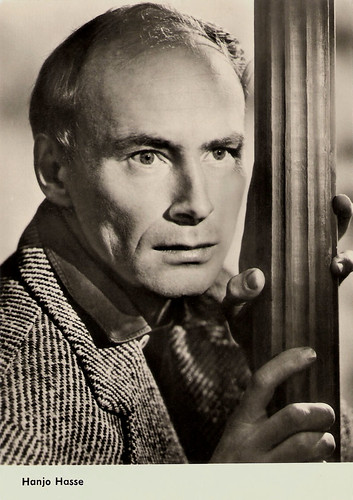
East-German postcard by VEB Progress Filmvertrieb, Berlin, no. 1517, 1961. Photo: Kurt Wunsch.
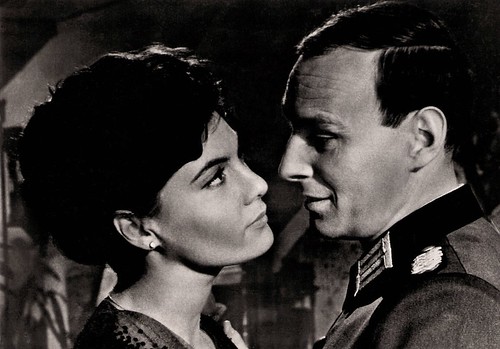
East-German postcard by VEB Progress Filmvertrieb, Berlin, no. 1834, 1963. Retail price: 0,20 DM. Photo: publicity still for Polnocná omsa/Midnight Mass (Jiri Krejcik, 1962) with Margit Bara.
Hannjo Hasse was born in Bonn, Germany, in 1921. Hannjo began his adult life working in an office. In 1938, he began to study acting at Lilly Ackermann’s Ausbildungsanstalt für deutschen Bühnennachwuchs (Institute for Stage Artists' Education) in Berlin. In 1941, he was drafted for military service during World War II. After the end of the war and his release from captivity, Hasse returned to Weimar, where he spent another six months to complete his drama training.
He made his debut on stage in the Nordhausen Theater, where he was also employed as a dramaturge. In 1951, Hasse made his first screen appearance, playing a minor role in Der Untertan/The Kaiser's Lackey (Wolfgang Staudte, 1951), based on Heinrich Mann's 1918 satirical novel by the same name. It was a huge success. He also played a supporting part in Ernst Thälmann (Kurt Maetzig, 1954), a film in two parts about the life of the leader of the Communist Party of Germany during much of the Weimar Republic.
Hasse worked in theatres in Eisleben, Burg bei Magdeburg and Schwerin, before settling at the Hans Otto Theater in Leipzig, where he was a member of the regular cast between 1954 and 1962. Afterwards, he moved to Berlin's Volksbühne, and then to the Deutsches Theater. Hasse played a wide range of supporting characters, from Malvolio to the Fledermaus. From the late 1950s, Hasse focused mainly on cinema and television work. Although his earlier stage roles were mostly comical in nature, in the cinema he depicted sinister characters almost solely.
He played the lead in the war film Der Fall Gleiwitz/The Gleiwitz Case (Gerhard Klein, 1961). The film themes the SS stage-managed Gleiwitz incident on the evening of 31 August 1939. This served as national-socialist propaganda as a pretext to start the Second World War by raiding Poland the next day. The plot was reconstructed exactly according to the statements of SS-Man Alfred Naujocks before British authorities at the Nuremberg trials.
Hasse’s other films included the Czech drama Vyšší princip/Higher Principle (Jiří Krejčík, 1960), the espionage thriller Reserviert für den Tod/Reserved for the Death (Heinz Thiel, 1963) with Hans-Peter Minetti, and the propaganda film An französischen Kaminen/At A French Fireside (Kurt Maetzig, 1963) with Arno Wyzniewski. The latter was one of eight major DEFA pictures made between 1959 and 1964 that centred on the theme of the Cold War, with an underlying message that East Germany had to defend itself from the West.
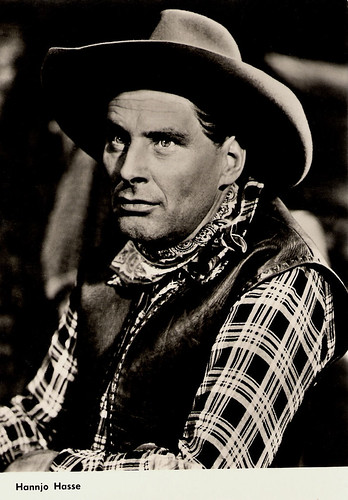
East-German postcard by VEB Progress Filmvertrieb, Berlin, no. 2.547, 1966. Photo: DEFA / Pathenheimer. Publicity still for Die Söhne der großen Bärin/The Sons of Great Bear (Josef Mach, 1966).
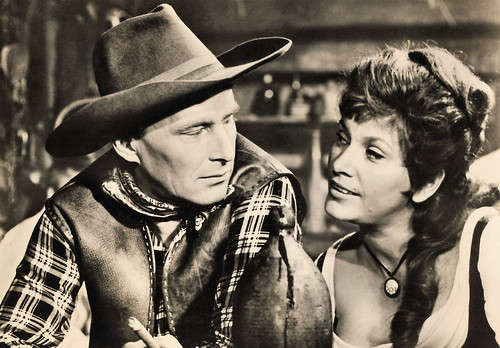
East-German postcard by VEB Progress Filmvertrieb, Berlin, no. 2.546, 1966. Photo: DEFA / Pathenheimer. Publicity still for Die Söhne der großen Bärin/The Sons of Great Bear (Josef Mach, 1966).
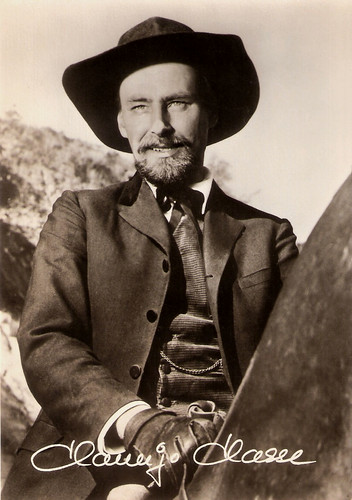
East-German postcard by VEB Progress Filmvertrieb, Berlin, no. 3181, 1968. Photo: DEFA / Pathenheimer. Publicity still for Spur des Falken/Trail of the Falcon (Gottfried Kolditz, 1968).
In 1966, Hannjo Hasse appeared in Die Söhne der großen Bärin/The Sons of Great Bear (Josef Mach, 1966), starring the Yugoslav actor Gojko Mitić in the leading role of Tokei-ihto. The picture is a revisionist Western, pioneering the genre of the Ostern (Eastern), and emphasises the positive portrayal of Native Americans, while presenting the Whites as antagonists. It is one of the most successful films produced by the DEFA studio.
Renate Seydel, who interviewed Hasse in 1966, commented that he was the most perennial villain in the actor's ensemble of DEFA and Deutscher Fernsehfunk. The favourable reception of The Sons of Great Bear surpassed by far what DEFA directors had anticipated. This paved the way for a dozen Easterns featuring Indians as the heroes, often portrayed by Mitić. This series became the studio's best-known and most successful film series. Hasse appeared in five Easterns, including Spur des Falken/Trail of the Falcon (Gottfried Kolditz, 1968) and Tödlicher Irrtum/Fatal Error (Konrad Petzold, 1970) with Armin Müller-Stahl.
Hasse is also remembered for depicting SD Colonel von Dietrich in the Yugoslav partisan film Valter brani Sarajevo/Walter Defends Sarajevo (Hajrudin Krvavac, 1971). In addition to those entertainment films, he also portrayed historical antagonists in several bleaker pictures dealing with the recent past, like Adolf Eichmann in the film Lebende Ware/Living Cargo (Wolfgang Luderer, 1966) - based on the Blood for Goods affair and as Reinhard Heydrich in the Czech-Russian war thriller Sokolovo (Otakar Vávra, 1975). Hasse told Seydel that he considered those roles as having educational value, to "demonstrate the full horror of Fascism" to younger viewers.
In 1971, Hasse was awarded the Art Prize of the German Democratic Republic. He also dubbed many films and was the German voice for Philippe Noiret, Pierre Brasseur and Yves Montand.
His later films include the Polish historical film Kopernik/Copernicus (Ewa Petelska, Czesław Petelski, 1973), the fairytale film Wer reißt denn gleich vorm Teufel aus/The Devil's Three Golden Hairs (Egon Schlegel, 1977) and the comedy Einfach Blumen aufs Dach/Simply flowers at the roof (Roland Oehme, 1979). His final bigger role was in the TV comedy Es war so nett in unserem Quartett/It was so fine in our quartet (Robert Trösch 1983). Hannjo Hasse died in Falkensee in the GDR in 1983 and is buried in the Südwestkirchhof Stahnsdorf. He was 61.

East-German postcard by VEB Progress Filmvertrieb, Berlin, no. 2790, 1967.

East-German postcard by VEB Progress Filmvertrieb, Berlin, no. 4869, 1969. Photo: Uhlenhut.
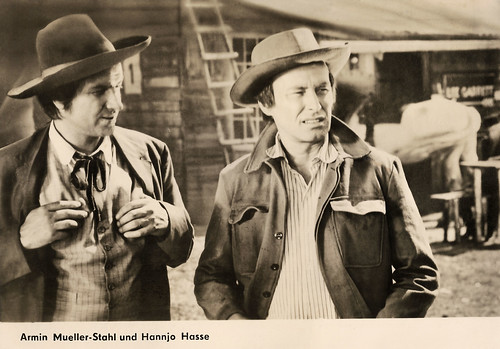
East-German postcard by VEB Progress Filmvertrieb, Berlin, no. 58/70. Photo: DEFA / Blümel Publicity still for Tödlicher Irrtum/Fatal Error (Konrad Petzold, 1970) with Armin Mueller-Stahl.
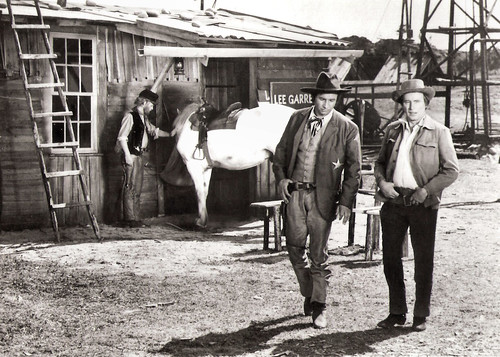
East-German postcard by VEB Progress Filmvertrieb, Berlin, no. 85/70d. Photo: DEFA / Blümel. Publicity still for Tödlicher Irrtum/Fatal Error (Konrad Petzold, 1970) with Armin Mueller-Stahl.
Sources: Tom B. (Westerns… all’ Italiana), Wikipedia, and IMDb.
This post was last updated on 25 August 2024.

East-German postcard by VEB Progress Filmvertrieb, Berlin, no. 3165, 1968. Photo: DEFA / Pathenheimer. Publicity still for Spur des Falken/Trail of the Falcon (Gottfried Kolditz, 1968).

East-German postcard by VEB Progress Filmvertrieb, Berlin, no. 1517, 1961. Photo: Kurt Wunsch.

East-German postcard by VEB Progress Filmvertrieb, Berlin, no. 1834, 1963. Retail price: 0,20 DM. Photo: publicity still for Polnocná omsa/Midnight Mass (Jiri Krejcik, 1962) with Margit Bara.
Sinister characters
Hannjo Hasse was born in Bonn, Germany, in 1921. Hannjo began his adult life working in an office. In 1938, he began to study acting at Lilly Ackermann’s Ausbildungsanstalt für deutschen Bühnennachwuchs (Institute for Stage Artists' Education) in Berlin. In 1941, he was drafted for military service during World War II. After the end of the war and his release from captivity, Hasse returned to Weimar, where he spent another six months to complete his drama training.
He made his debut on stage in the Nordhausen Theater, where he was also employed as a dramaturge. In 1951, Hasse made his first screen appearance, playing a minor role in Der Untertan/The Kaiser's Lackey (Wolfgang Staudte, 1951), based on Heinrich Mann's 1918 satirical novel by the same name. It was a huge success. He also played a supporting part in Ernst Thälmann (Kurt Maetzig, 1954), a film in two parts about the life of the leader of the Communist Party of Germany during much of the Weimar Republic.
Hasse worked in theatres in Eisleben, Burg bei Magdeburg and Schwerin, before settling at the Hans Otto Theater in Leipzig, where he was a member of the regular cast between 1954 and 1962. Afterwards, he moved to Berlin's Volksbühne, and then to the Deutsches Theater. Hasse played a wide range of supporting characters, from Malvolio to the Fledermaus. From the late 1950s, Hasse focused mainly on cinema and television work. Although his earlier stage roles were mostly comical in nature, in the cinema he depicted sinister characters almost solely.
He played the lead in the war film Der Fall Gleiwitz/The Gleiwitz Case (Gerhard Klein, 1961). The film themes the SS stage-managed Gleiwitz incident on the evening of 31 August 1939. This served as national-socialist propaganda as a pretext to start the Second World War by raiding Poland the next day. The plot was reconstructed exactly according to the statements of SS-Man Alfred Naujocks before British authorities at the Nuremberg trials.
Hasse’s other films included the Czech drama Vyšší princip/Higher Principle (Jiří Krejčík, 1960), the espionage thriller Reserviert für den Tod/Reserved for the Death (Heinz Thiel, 1963) with Hans-Peter Minetti, and the propaganda film An französischen Kaminen/At A French Fireside (Kurt Maetzig, 1963) with Arno Wyzniewski. The latter was one of eight major DEFA pictures made between 1959 and 1964 that centred on the theme of the Cold War, with an underlying message that East Germany had to defend itself from the West.

East-German postcard by VEB Progress Filmvertrieb, Berlin, no. 2.547, 1966. Photo: DEFA / Pathenheimer. Publicity still for Die Söhne der großen Bärin/The Sons of Great Bear (Josef Mach, 1966).

East-German postcard by VEB Progress Filmvertrieb, Berlin, no. 2.546, 1966. Photo: DEFA / Pathenheimer. Publicity still for Die Söhne der großen Bärin/The Sons of Great Bear (Josef Mach, 1966).

East-German postcard by VEB Progress Filmvertrieb, Berlin, no. 3181, 1968. Photo: DEFA / Pathenheimer. Publicity still for Spur des Falken/Trail of the Falcon (Gottfried Kolditz, 1968).
A revisionist western
In 1966, Hannjo Hasse appeared in Die Söhne der großen Bärin/The Sons of Great Bear (Josef Mach, 1966), starring the Yugoslav actor Gojko Mitić in the leading role of Tokei-ihto. The picture is a revisionist Western, pioneering the genre of the Ostern (Eastern), and emphasises the positive portrayal of Native Americans, while presenting the Whites as antagonists. It is one of the most successful films produced by the DEFA studio.
Renate Seydel, who interviewed Hasse in 1966, commented that he was the most perennial villain in the actor's ensemble of DEFA and Deutscher Fernsehfunk. The favourable reception of The Sons of Great Bear surpassed by far what DEFA directors had anticipated. This paved the way for a dozen Easterns featuring Indians as the heroes, often portrayed by Mitić. This series became the studio's best-known and most successful film series. Hasse appeared in five Easterns, including Spur des Falken/Trail of the Falcon (Gottfried Kolditz, 1968) and Tödlicher Irrtum/Fatal Error (Konrad Petzold, 1970) with Armin Müller-Stahl.
Hasse is also remembered for depicting SD Colonel von Dietrich in the Yugoslav partisan film Valter brani Sarajevo/Walter Defends Sarajevo (Hajrudin Krvavac, 1971). In addition to those entertainment films, he also portrayed historical antagonists in several bleaker pictures dealing with the recent past, like Adolf Eichmann in the film Lebende Ware/Living Cargo (Wolfgang Luderer, 1966) - based on the Blood for Goods affair and as Reinhard Heydrich in the Czech-Russian war thriller Sokolovo (Otakar Vávra, 1975). Hasse told Seydel that he considered those roles as having educational value, to "demonstrate the full horror of Fascism" to younger viewers.
In 1971, Hasse was awarded the Art Prize of the German Democratic Republic. He also dubbed many films and was the German voice for Philippe Noiret, Pierre Brasseur and Yves Montand.
His later films include the Polish historical film Kopernik/Copernicus (Ewa Petelska, Czesław Petelski, 1973), the fairytale film Wer reißt denn gleich vorm Teufel aus/The Devil's Three Golden Hairs (Egon Schlegel, 1977) and the comedy Einfach Blumen aufs Dach/Simply flowers at the roof (Roland Oehme, 1979). His final bigger role was in the TV comedy Es war so nett in unserem Quartett/It was so fine in our quartet (Robert Trösch 1983). Hannjo Hasse died in Falkensee in the GDR in 1983 and is buried in the Südwestkirchhof Stahnsdorf. He was 61.

East-German postcard by VEB Progress Filmvertrieb, Berlin, no. 2790, 1967.

East-German postcard by VEB Progress Filmvertrieb, Berlin, no. 4869, 1969. Photo: Uhlenhut.

East-German postcard by VEB Progress Filmvertrieb, Berlin, no. 58/70. Photo: DEFA / Blümel Publicity still for Tödlicher Irrtum/Fatal Error (Konrad Petzold, 1970) with Armin Mueller-Stahl.

East-German postcard by VEB Progress Filmvertrieb, Berlin, no. 85/70d. Photo: DEFA / Blümel. Publicity still for Tödlicher Irrtum/Fatal Error (Konrad Petzold, 1970) with Armin Mueller-Stahl.
Sources: Tom B. (Westerns… all’ Italiana), Wikipedia, and IMDb.
This post was last updated on 25 August 2024.
No comments:
Post a Comment